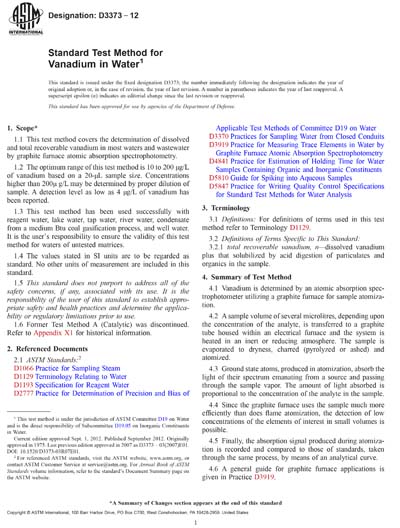Historical
ASTM D3373-12
Standard Test Method for Vanadium in Water
1.1 This test method covers the determination of dissolved and total recoverable vanadium in most waters and wastewater by graphite furnace atomic absorption spectrophotometry.
1.2 The optimum range of this test method is 10 to 200 μg/L of vanadium based on a 20-μL sample size. Concentrations higher than 200μ g/L may be determined by proper dilution of sample. A detection level as low as 4 μg/L of vanadium has been reported.
1.3 This test method has been used successfully with reagent water, lake water, tap water, river water, condensate from a medium Btu coal gasification process, and well water. It is the user's responsibility to ensure the validity of this test method for waters of untested matrices.
1.4 The values stated in SI units are to be regarded as standard. No other units of measurement are included in this standard.
1.5 This standard does not purport to address all of the safety concerns, if any, associated with its use. It is the responsibility of the user of this standard to establish appropriate safety and health practices and determine the applicability or regulatory limitations prior to use.
1.6 Former Test Method A (Catalytic) was discontinued. Refer to Appendix X1 for historical information.
Content Provider
ASTM International [astm]






